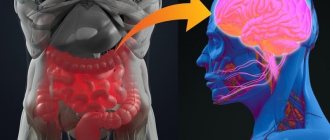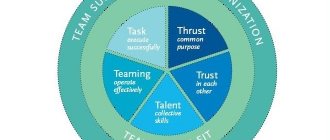Transpersonal psychology is a scientific movement in modern practices of psychology, which is based and progresses on the foundations of Western psychology, while introducing into practice the accumulated knowledge of spiritual and religious plans, adapting them to psychotherapeutic practice.
She focuses her attention on the deep areas of the human psyche, processes that develop personality and the dynamics of consciousness, philosophical rethinking, scientifically based ideas, experiments and world psychological technologies.
Transpersonal psychology in its teaching implies finding in a person’s memory the processes of his maturation in the womb and subsequent birth.
Transpersonal psychology explores the maximum possible abilities and capabilities of each individual person, which means that research is carried out in the transpersonal and superpersonal sphere of consciousness. The theme of superman and super being is touched upon here. The nature of the occurrence of emotional experiences, their form and cause-and-effect relationships are also studied. On the basis of what experiences and emotions arise, where they come from and what they can transform into, you can also think about where these emotions can be directed in order to extract maximum benefit from it, primarily for the person himself.
The object of study of transpersonal psychology is a person with a creative nature, looking for ways of self-improvement and self-knowledge, with the desire for all possible realizations of their capabilities, at the same time from an adequate and balanced side. First, you need to discover these capabilities in yourself and bring them to a minimum level.
In transpersonal psychology, the universe is a harmonious and holistic environment in which a person is aware of his capabilities and understands the connection not only with the people around him, but also with the Universe as a whole.
Approaches to self-knowledge and self-development
- Psychological therapy based on body orientation. Concentration of attention on objects and contacts with them.
- Art therapy. Studying new works, getting acquainted with the creativity of different eras and peoples.
- Breathing practices and techniques. Holotropic breathing, rebirthing.
- Meditation. Achieving peace, restoring harmony with oneself.
- Yoga class. Harmony with the body.
- Analysis and elaboration of dreams. Memorizing your dreams, trying to analyze them and understand why you dream something and why.
- Activating the imagination.
Approaches and techniques in transpersonal psychology emphasize natural, direct and frank experience with the manifestation and expression of sincere emotions that help a person open up and discover emotional problems, make discoveries and gain insight. In the same way, interpersonal problems in relationships can be solved by attracting the unconscious forces of a person.
This is not a panacea
I had three sessions with Matrenitsky, during which I tried all the techniques that he owned. Each time he helped me formulate a request that I wanted to work with in a trance state. Then he asked me to focus on bodily sensations: focus on how my heart beats, how my body becomes heavier as it relaxes. Then, following his instructions, I imagined what my anxiety looked like. She was a red ball, a rock, and a cloud of dust. I think these pictures depended on my general mood. For the remaining time, the doctor was silent, only occasionally asking questions like “What do you see now?”, “What do you want to do?” And I described to him everything that my imagination drew.
There are meditations during which you need to imagine how a flower or tree is growing inside you. In a trance meditation I practiced with a therapist, I did the same thing, but without the intention of seeing a specific picture. I gave free rein to my imagination and sometimes “watched” a film about my childhood, sometimes about the present, and sometimes I saw myself flying in space and hitting planets with anger. But I always managed the visuals myself. Apparently, this is what helped me relieve anxiety - in imaginary worlds I could do anything if I was as relaxed and concentrated as possible.
The anxiety disappeared within a month. And I was delighted! Imagine if you lived your whole life with your eyes closed, and then they were opened to you - and you saw cherry blossoms for the first time. That's pretty much how I felt.
Another patient of Matrenitsky, Olga, also stopped worrying. During the sessions she could not relax for a long time - her habit of controlling herself and everything around her was so strong. Therefore, at home she additionally learned to meditate. As a result, the most important experience that Olga gained during therapy with the doctor was letting go of control.
“Before, I couldn’t sit quietly and watch a movie: I needed to do something “useful” at the same time. I overprotected my loved ones and fell into hysterics if my son or mother did not answer me when I called. And after therapy, I seemed to exhale, relaxed for the first time in my life. My relationship with my family has improved, I started working with pleasure and learned to relax,” Olga describes her new state.
For six months there was no anxiety in my life at all. But then the anxiety returned, although its intensity decreased significantly. If before she looked like an annoying fly, now she looks like a tired one.
And the skills I acquired in countless sessions of cognitive behavioral therapy helped me cope with it.
Olga is also sure that transpersonal therapy alone is not enough: “Yes, I dug up a bunch of deep-seated problems and gained a different life experience. But my behavior hasn't changed. In order to master these “fossils” and integrate them into life, I have to go to another Gestalt therapist.”
Vladislav Matrenitsky says that his approach is not a panacea. And Amina Nazaralieva concludes that you need to start dealing with a mental problem with methods whose effectiveness and safety have been scientifically proven.
Subject of study
- Human consciousness, ways of expanding it and studying the resulting states.
- Parapsychology. The study of phenomena that cannot be explained by the activities of the organs of touch and senses.
- The ability to narrow consciousness to a specific specific organ. Focusing on a specific organ to study or diagnose it, followed by treatment.
- Spiritual practices and religions and their influence on the psyche, regarding psychiatry and psychology.
- The influence and effect of psychedelic drugs on human consciousness.
- Breathing exercises and practices and their effect on mental state. This includes holotropic breathing and rebirthing.
- Meditations. The influence of meditation on the psyche.
- Yoga practices.
- Spiritual growth and its psychological component.
Transpersonal psychology tries to capture the full picture of human existence, while other sciences give preference to a limited part of realistic processes.
Transpersonal psychology studies a wide range of phenomena in human experience:
- Changes in the state of consciousness, this can also include changes using regressive hypnosis.
- Diversity of states of consciousness.
- Crisis of the spiritual sphere.
- Near-death experiences and states.
- Intuition and the possibilities of its development.
- Creative abilities – their manifestations and development.
- Higher spheres of consciousness and their states. Achievement and analysis.
- Personal resources.
- Phenomena of a parapsychological nature.
Transpersonal psychology has several representatives of scientists with different approaches and concepts.
The first beginnings of transpersonal psychology can be found in the works of Carl Jung. According to his theory, the study of the deep spheres of the psyche is possible through personal cognition, which transforms into knowledge and passes into an unconscious state into the subconscious.
William James is considered to be the founder of transpersonal psychology.
- Abraham Maslow. The founder of the doctrine of self-actualization of personality. The teaching is built on peak experiences, such as climax (orgasm) in love relationships and sex, sudden insights and the birth of new ideas, ecstasy, expansion of the boundaries of consciousness, loss of one’s “I”. Abraham Maslow's research is the basis for transpersonal psychology.
- Stanislav Grof. Researcher of psychedelic drugs and their effects on the psyche. The effect of the drug is based on a change in consciousness and perception of the environment, as well as an impact on the emotional sphere. The approach is based on psychotherapeutic work with self-knowledge, through a forced change in consciousness under the influence of psychotropic drugs. Founder of the holotropic breathing technique. The holotropic breathing technique is based on removing blockages that hold back internal resources and energy flows, which can be used to activate suppressed consciousness and transform it into flows of positive energy and experiences aimed at learning something. In the theory of Stanislav Grof, two types of consciousness are distinguished: consciousness focused on the reality of touch and consciousness focused on internal reality, the one that is not tangible. Moreover, both states are real and capable of interacting with each other. The main achievement of Stanislav Grof in transpersonal psychology is the assumption that almost all illnesses of a psychological nature, only hidden under the guise of an illness, are not actually such. All mental illnesses are basically a crisis state of the body in terms of personal or spiritual growth. No one is immune from such cases, and anyone can be at risk.
- Vladimir Maikov. Scientific figure adapting and developing transpersonal psychology in Russia using the methods and experiences of Western colleagues. Introduction of transpersonal psychology and its methods through trainings, seminars and webinars. One of the techniques: holotropic breathing as a solution to life’s difficulties. Expanding consciousness and going beyond one’s “I” with the help of breathing practices and exercises.
Transpersonal psychology makes it possible to understand that the human psyche is richer and more intricate than it initially appears. The human subconscious hides secrets that normally cannot be revealed. From the subconscious you can extract amazing memories that the conscious mind may not even be aware of.
Psychosynthesis by R. Assagioli
From the point of view of Assagioli, a supporter of the ideas of psychoanalysis, all human problems are related to the fact that he loses internal integrity and harmony. Some aspects of the human psyche begin to contradict each other and their separation occurs. A similar process (lack of integrity, synthesis) leads to various diseases.
In order to unite the disparate parts of the psyche, Assagioli developed the method of psychosynthesis.
Assogioli distinguishes two stages of psychosynthesis:
- Personal psychosynthesis (combining all disparate elements of personality into a single whole). At this stage, a healthy personality is formed.
- Spiritual psychosynthesis (work with different levels of the psyche - transpersonal area). At this stage, a person acquires a sense of the energy that was previously inaccessible to him and learns to use it in life.
A person does not immediately experience changes in his life thanks to the practical method of psychosynthesis. From Assagioli’s point of view, a person needs time in order to accept new experience, “the maturation of the mental fetus must take place” [3].
Thus, from the point of view of the transpersonal direction, a person has access to all the information of the Universe and is connected with all of humanity. Representatives of this direction focus on releasing new “energy” and getting rid of various problems through altered states of consciousness. With the help of various techniques developed by this area of psychological science, a person is supposedly healed and gains integrity in his relationship with the world.
Research methods
Transpersonal psychology uses the following techniques:
- Psychophysiological study.
- Psychodiagnostic techniques.
- Techniques using psychedelic drugs.
- Breathing practices and techniques.
- Analysis of the functioning of the senses and touch.
- Imagination and visualization.
Techniques for initiating changes in consciousness:
- Initial focusing of attention on a certain subject, sudden switching of attention to another subject.
- Stimulation through deprivation of the opportunity to satisfy any need. In this option, there is a refusal to satisfy thirst and a refusal of water during physical activity.
- Increased motor activity.
- Exposure to temperature changes.
- Impact using acoustic systems.
- Restrictions or deprivation of movement.
- Privacy. Restriction in a closed, quiet and dark room.
- Immersion of a person in conditions in which it is impossible to sleep.
- Holotropic breathing.
- Rebirthing. The founder of the methodology and technology is Leonardo Orr.
- Theta healing.
Altered Consciousness
Transpersonal research studies states of altered consciousness when it goes beyond the usual “I”. The bulk of transpersonal psychology materials are taken from dream interpretation, meditation experience and paranormal phenomena.
Representatives of this movement admit the existence of higher powers, but avoid attachment to any particular religion. Transpersonal psychology strives for freedom, love and universal brotherhood. The main task of this direction is to overcome personal isolation, self-sufficiency and centering. What did its representatives say about this science?
Holotropic Breathwork Technique
Holotropic therapy is aimed at awakening the unconscious part of the psyche through breathing techniques, special physical exercises and music. Holotropic breathing is aimed at removing blockages, replenishing vitality and energy that has been suppressed or muffled by consciousness.
Holotropic breathing technique: deep breaths with high intensity, speed and frequency of exhalations. As a result, hyperventilation of the lungs occurs.
Breathing activates energy, spontaneous uncontrolled body movements open the way to transformation and healing. The newly acquired and discovered energy will go in the right direction and as a result, the integrity of one’s “I” will be achieved.
The result of holotropic breathing is relaxation of the body, finding a solution to the current situation.
Holotropic Breathwork can bring about revelations and awaken sincerity that may not be possible or accessible through intellectual approach and problem solving.
William James
In the Gifford lectures, which were called “The Varieties of Religious Experience,” W. James emphasized the need to use empirical methods to understand spiritual experiences. Scientists make a mistake when they begin to divide reality into an object of observation and a subject, because everything depends on the external observer. How a person interprets the reality he sees should be the subject of research. As a result, it will be possible to explore what level of consciousness an individual has and how much spiritual transformation he needs.
Rebirthing technique
Rebirthing helps to cope with negative emotions and throw out negative energy from oneself by working through birth traumas during the birth process. Rebirthing consists of five stages:
- Organization of breathing according to a certain cyclicity. Pauseless alternation of inhalations and exhalations.
- Relaxation of muscles, immersion in a relaxed state of the human psyche.
- Attentiveness, remembering everything that happens down to the smallest detail. Perceiving the environment with consistent accuracy.
- Transformation of perception and mood. Eliminating negative emotions and acquiring positive ones.
- Trust in everything that happens during the rebirthing technique.
Ken Wilber's theory
And despite all the obstacles and misunderstandings, the methods of transpersonal psychology continue to develop. At one time, K. Wilber was the founder of a separate approach in it, which was called integral. In his first scientific work, “The Spectrum of Consciousness,” he came to the conclusion that human consciousness consists of several levels (spectra) of self-awareness. These spectra cover all possible levels of consciousness, ranging from boundless unity with the Universe and ending with the level of the mask, where the individual identifies himself with something, suppressing his negative characteristics.
According to Ken Wilber there are 5 levels:
- Spectrum mask. Being in a different social environment and falling under its influence, a person can suppress or even repress his negative qualities, memories, experiences, thereby limiting himself. As a result, a person loses the opportunity to be fully aware of himself.
- The spectrum of body and ego. At this level, a person clearly understands that he consists of a physical shell (body) and soul. Although the concept of “soul” still remains something abstract, and not a lived experience.
- Existential spectrum. The individual begins to realize himself as a kind of psychophysical being that lives in space-time dimensions. A person realizes that he is a person, and there is also an external world.
- Transpersonal spectrum. At this level, the realization comes that human life is not limited to the physical body. The individual realizes that he is something more, but still does not feel unity with the Universe.
- Unified consciousness. At this level, the final unity with everything that exists around is implied. Man becomes inseparable from existence, that is, he can be considered all that exists.
Consciousness develops in a hierarchical sequence from the lowest levels to the highest.
ThetaHealing
The basis of thetahealing is concentration and work on the conditioned wave to achieve transformation of brain activity.
Constant training and meditation come to the rescue, teaching the human condition to feel, first of all, one’s energy field.
Theta-healing technique: a person visualizes a pulsating clot of light and energy in his chest, then this clot turns into a stream and strives to rise above his head. After a set time, the flow must be returned back and grouped into a clot in its original position. The technique is repeated until the connection with thought processes is lost - this action leads to the theta state. The theta state is characterized by concentrated work on a specific wave.
The result is calm and tranquility from the actions taken, along with this, concentration of attention arises.
Abraham Maslow
This scientist stood at the origins of humanistic psychology, the main focus of his activity is “peak experiences.” These include insights, peak moments of love, ecstasy, loss of boundaries of one’s own self. The description of these moments became the main pretext for the development of transpersonal psychology.
During one of his lectures in San Francisco, Maslow spoke about the emergence of a “fourth force” that would study the experiences that a person experiences when meditating or taking psychedelic drugs. At that time, there were only three schools of thought in psychology: behaviorism, psychoanalysis, and humanistic psychology. But none of them was able to describe those phenomena that were intended for the “fourth force.” Even humanistic psychology, called the “third force,” was limited in its methods. This served as good support for the emergence of a new direction.
Education
Anyone can gain knowledge on transpersonal psychology at esoteric seminars, or undergo training at a specialized institute. It is preferable to study at an institute, since there is more information in theoretical and practical terms than a seminar can provide.
The main requirement in teaching transpersonal psychology is a true and sincere desire to gain knowledge and learn to use it correctly, which is holistic in nature and is not activated by a superficial or instant desire to obtain a certificate or diploma, but is based on the direct motivation of studying oneself and the world, knowledge of theoretical foundations with desire to practice transpersonal psychology.
Many call transpersonal psychology not a science, but a half-science, and openly criticize the weaknesses of non-scientific foundations, approaches to the study of the human psyche and psychology in general, as well as the dubiousness of the results obtained and the use of methods for obtaining them. But, despite all the statements, transpersonal psychology is developing and attracting more and more supporters and like-minded people.
The use of transpersonal psychology helps to view a person from all aspects of his life: behavior, reactions, emotions and feelings, which in turn provides an opportunity for development and self-improvement, and the discovery of something new in oneself.
Transpersonal psychology reveals the resource of human potential, its creative potential and ability to gain insight.
The difference between transpersonal psychology and other sciences
Modern trends in psychology claim to be purely scientific and objective; their research is confirmed by facts and through research experiments. But traditional science about man somewhat ignores individual phenomenological manifestations of personality - transpersonal experience.
The transpersonal approach in psychology is more focused on specific areas of knowledge about a person:
- on a special understanding of the psyche, which is “commensurate with the entire universe (everything that exists)” and should not be limited to personal experience;
- on phenomena that inspire creativity - their nature, forms, cause and effect; on the study of human consciousness in combination with the creative mind of the Universe, when the individual is considered in a variety of contexts (interpersonal, intercultural, environmental, cosmic);
- on the integrity of mind and physicality, which inherently exist from each other and individually do not determine the whole (human personality), but in combination allow one to live in harmony with oneself;
- on the breadth of coverage and adaptability, when even diametric areas of knowledge (religion and physics, for example) fall into the sphere of interests of TP.
It is possible to clearly formulate what TP is not: it is called rather parascience, it is not narrowed down to a scientific discipline, almost all scientific societies criticize the weakness of the scientific foundations of the approach and the effectiveness of the methods used in it. Although the popularity of TP does not decrease because of this and is even growing!
By revising the established traditions of the scientific approach, TP manages to combine psychophysics and psychophysiology, which are incompatible from a scientific point of view.











